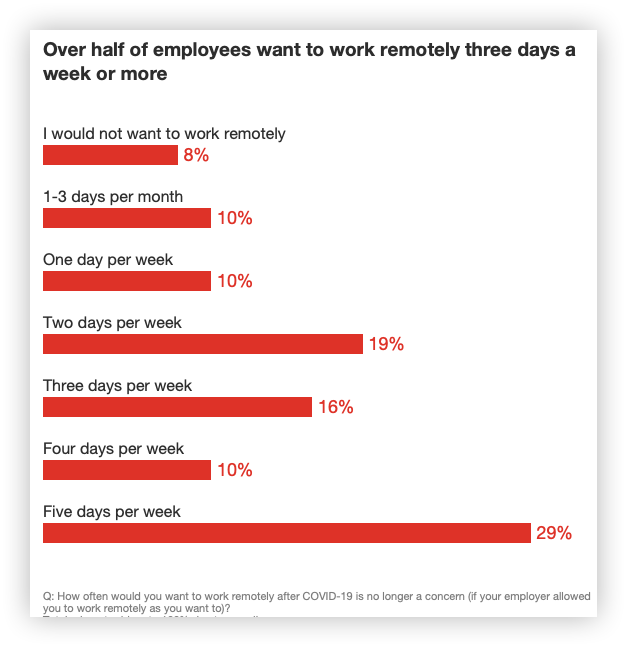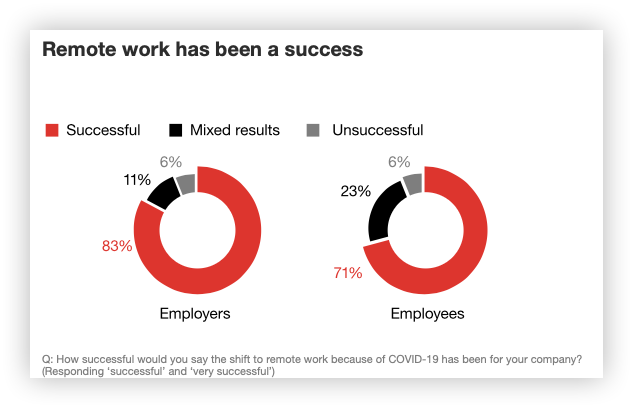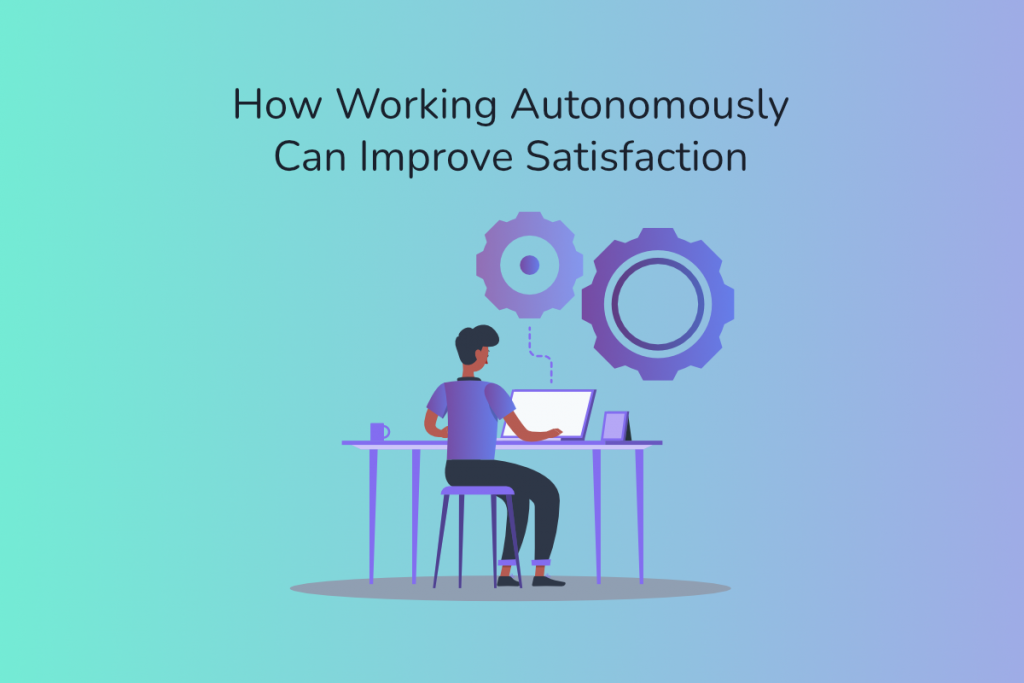Working autonomously has the potential to generate significant productivity benefits for your organisation. It’s a cornerstone of a happy, engaged workforce who knows their company trusts them, rewards them adequately and cares about their mental wellbeing.
As a company, you spend less time and fewer resources by encouraging your employees to work autonomously. If you put your confidence in people to do the job they were hired to do, rather than resorting to inefficient command-control lines, your management saves time which can be reinvested into activities that generate revenue.
You’ll also end up with a robust, adaptable workforce that doesn’t crumble without constant direction.
At the same time, working autonomously offers several benefits for the employee – reduced stress levels, a better work-life balance, increased motivation and more emotional investment in the organisation’s success. This results in higher levels of overall job satisfaction and employee engagement, which translates directly into increased productivity – and by extension, increased revenues.
What does autonomy in the workplace look like?
Autonomy at work varies across different working environments.
Some workplaces are able to offer vastly different levels of autonomy than others. An office environment can offer more flexible hours than a hospital ward with a strict rota, for example.
Equally, there are plenty of other ways to build employee autonomy.
Workplaces typically use a mixture of the following approaches:
- Control over work tasks: employees might not set their own tasks, but managers can encourage employees to prioritise and execute them however they feel best.
- Freedom from constant interruption: checking in on progress too often reduces productivity and suggests employees aren’t trusted.
- Ownership of performance: employee success is recognised at an individual level, rather than lumped together in general team, department or organisational performance.
- Flexible hours: within reason, employees can fit their work hours around other commitments such as childcare.
- Home working: employees can work from home to ease time pressures around commuting, or work around family commitments.
When working autonomously, employees feel more valued
On a basic level, a little trust and respect go a long way in motivating your workforce.
By offering your employees higher levels of autonomy in how they work, you’re making a statement as an organisation that you trust your employees. Whilst this seems simple, its importance shouldn’t be overstated.
There’s a reason most people hate being micromanaged. It’s because they feel patronised, underappreciated and overlooked. Micromanagement, in effect says, “our default setting is to assume we need to manage your productivity, rather than you”. If you feel that’s what your employer thinks of you, underperformance and indifference become the norm.
Employees working independently experience higher levels of job satisfaction simply because they feel that their employer values them. There’s a sense of professional pride in being trusted to do the job you were hired to do. Employees build up skills over a lifetime and want to know their expertise is appreciated.

Employees feel empowered to perform when working autonomously
Another major benefit of working autonomously is that employees take a sense of pride and ownership in the work that they complete.
In other words, they feel that their work has had an impact on their organisation and that others recognise this. This feeling of ownership impacts performance. Individual employees feel more accountable for their work and are therefore driven to perform at their best.
This has a powerful immediate effect on employee engagement, as employees become vested in the success of the projects they’re more emotionally involved in.
As well as boosting employee engagement in the short-term, however, working autonomously also results in higher levels of job satisfaction and positive effects over employee well-being in the longer term.
A large study by the University of Birmingham of 20,000 employees confirms this.
Summarising the findings, Dr Daniel Wheatley said:
“Greater levels of control over work tasks and schedule have the potential to generate significant benefits for the employee, which was found to be evident in the levels of reported well-being. The positive effects associated with informal flexibility and working at home, offer further support to the suggestion that schedule control is highly valued and important to employees ‘enjoying’ work.”
As employees become more invested in their performance, they feel increased motivation to take steps to improve it – by learning new skills or building connections with others across the company, for example.
Over time, this has positive effects on potential for bonuses, raises, promotions or more senior positions elsewhere.
In other words, working autonomously helps employees create careers with goals, milestones and progression opportunities – a significant factor in whether employees enjoy their work or not.
Working autonomously improves work-life balance
Pre-Covid, multiple surveys suggested that 80% of employees would like to work from home at least once a week, and would even take a pay cut to do so. More recent figures suggest that this desire has only increased since the pandemic, with over half of employees saying they would like to work remotely three days a week or more.

(Image source: pwc.com)
There’s good reason for this. The same study found that both employees (71%) and employers (83%) have found remote work to be a success throughout the pandemic.

(Image source: pwc.com)
As well as trusting employees to manage their own workloads and work in a manner that suits them, autonomy in the workplace can also give your employees greater flexibility when it comes to where and when they work.
This won’t be possible for all work environments, but for those where constant staff presence is not essential (such as offices), offering flexible hours and home working options reduces the stress of juggling work with everyday demands like arranging childcare and attending healthcare appointments.
When you remove the need to worry about these things, you remove a significant distraction that drives down productivity. Your employees can focus more on the work at hand rather than how they’re going to manage the school run, whether the GP surgery has any late appointments left, or whether the trains will get them back in time to watch their child’s school play.
There’s plenty of research that suggests home working offers productivity gains, too.
A 2020 survey suggests that 75% of office workers (in this case, marketers) feel more productive at home. Bear in mind that these results are with the major distractions a global pandemic offers, like home-schooling, worrying about loved ones and sharing working spaces or devices. Imagine what those figures would look like without the impact of COVID 19.
A quick summary
Working autonomously increases job satisfaction and employee engagement across your organisation. If you demonstrate to your employees that you trust them to manage their own workloads and apply their skills to the best of their professional knowledge, they will be happier at work.
There are many ways of doing this. You might be able to offer flexible working options. If you can’t, you can encourage workplace autonomy by recognising individual contributions employees make, avoiding over-intrusive interruptions and letting employee performance speak for itself.
This has major benefits for employers as well – employee engagement and job satisfaction increase productivity significantly, which makes it easier for organisations to hit key business goals and grow their revenue.
Overall, the long-term benefits of working autonomously far outweigh keeping your workforce’s potential under lock and key through intrusive micro-managerial practice.





